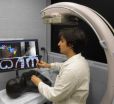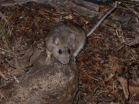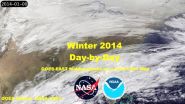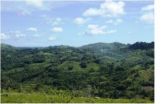(Press-News.org) Johns Hopkins researchers have devised a computerized process that could make minimally invasive surgery more accurate and streamlined using equipment already common in the operating room.
In a report published recently in the journal Physics in Medicine and Biology, the researchers say initial testing of the algorithm shows that their image-based guidance system is potentially superior to conventional tracking systems that have been the mainstay of surgical navigation over the last decade.
"Imaging in the operating room opens new possibilities for patient safety and high-precision surgical guidance," says Jeffrey Siewerdsen, Ph.D., a professor of biomedical engineering in the Johns Hopkins University School of Medicine. "In this work, we devised an imaging method that could overcome traditional barriers in precision and workflow. Rather than adding complicated tracking systems and special markers to the already busy surgical scene, we realized a method in which the imaging system is the tracker and the patient is the marker."
Siewerdsen explains that current state-of-the-art surgical navigation involves an often cumbersome process in which someone — usually a surgical technician, resident or fellow — manually matches points on the patient's body to those in a preoperative CT image. This process, called registration, enables a computer to orient the image of the patient within the geometry of the operating room. "The registration process can be error-prone, require multiple manual attempts to achieve high accuracy and tends to degrade over the course of the operation," Siewerdsen says.
Siewerdsen's team used a mobile C-arm, already a piece of equipment used in many surgeries, to develop an alternative. They suspected that a fast, accurate registration algorithm could be devised to match two-dimensional X-ray images to the three-dimensional preoperative CT scan in a way that would be automatic and remain up to date throughout the operation.
Starting with a mathematical algorithm they had previously developed to help surgeons locate specific vertebrae during spine surgery, the team adapted the method to the task of surgical navigation. When they tested the method on cadavers, they found a level of accuracy better than 2 millimeters and consistently better than a conventional surgical tracker, which has 2 to 4 millimeters of accuracy in surgical settings.
"The breakthrough came when we discovered how much geometric information could be extracted from just one or two X-ray images of the patient," says Ali Uneri, a graduate student in the Department of Computer Science in the Johns Hopkins University Whiting School of Engineering. "From just a single frame, we achieved better than 3 millimeters of accuracy, and with two frames acquired with a small angular separation, we could provide surgical navigation more accurately than a conventional tracker."
The team investigated how small the angle between the two images could be without compromising accuracy and found that as little as 15 degrees was sufficient to provide better than 2 millimeters of accuracy.
An additional advantage of the system, Uneri says, is that the two X-ray images can be acquired at extremely low dose of radiation — far below what is needed for a visually clear image, but enough for the algorithm to extract accurate geometric information.
The team is translating the method to a system suitable for clinical studies. While the system could potentially be used in a wide range of procedures, Siewerdsen expects it to be most useful in minimally invasive surgeries, such as spinal and intracranial neurosurgery.
A. Jay Khanna, M.D., an associate professor of orthopaedic surgery and biomedical engineering at the Johns Hopkins University School of Medicine, evaluated the system in its first application to spine surgery. "Accurate surgical navigation is essential to high-quality minimally invasive surgery," he says. "But conventional navigation systems can present a major cost barrier and a bottleneck to workflow. This system could provide accurate navigation with simple systems that are already in the OR and with a sophisticated registration algorithm under the hood."
Ziya Gokaslan, M.D., a professor of neurosurgery at the Johns Hopkins University School of Medicine, is leading the translational research team. "We are already seeing how intraoperative imaging can be used to enhance workflow and improve patient safety," he says. "Extending those methods to the task of surgical navigation is very promising, and it could open the availability of high-precision guidance to a broader spectrum of surgeries than previously available."
INFORMATION:
Other authors on the paper were Yoshito Otake and Adam S. Wang of The Johns Hopkins University and Gerhard Kleinszig and Sebastian Vogt of Siemens Healthcare.
This research was supported by grants from the National Institutes of Health and an academic-industry partnership with Siemens Healthcare.
Link to the article: http://iopscience.iop.org/0031-9155/59/2/271/article
Johns Hopkins Medicine
Media Relations and Public Affairs
Media Contacts:
Vanessa McMains
410-502-9410
vmcmain1@jhmi.edu
Catherine Kolf
443-287-2251
ckolf@jhmi.edu
New guidance system could improve minimally invasive surgery
2014-03-27
ELSE PRESS RELEASES FROM THIS DATE:
Anti-clotting agent helps reduce the incidence and impact of stent thrombosis during PCI
2014-03-27
WASHINGTON, DC – March 27, 2014 –A new angiographic analysis of the CHAMPION PHOENIX trial examined the incidence and impact of stent thrombosis (ST) in patients undergoing percutaneous coronary intervention (PCI). Results of the study were released today and will be presented March 30 at the American College of Cardiology 63rd Annual Scientific Session.
CHAMPION PHOENIX was a prospective, double-blind, active-controlled trial which randomized 11,145 patients to receive intravenous cangrelor or oral clopidogrel administered at the time of PCI. In a previous analysis presented ...
A tale of 2 species
2014-03-27
A pair of new studies from the Wildlife Conservation Society, Idaho State University, and the University of Nevada Reno look at the surprising variety of factors that prevent two closely related species of woodrats from becoming a single hybrid species despite the existence of hybrid individuals where the two species come into contact.
After finding that two closely related species, the desert and Bryant's woodrats, could interbreed and produce hybrid offspring, scientists set out to determine why only 14 percent of the population in a "contact zone" had genetic signatures ...
Satellite time-lapse movie shows US East Coast snowy winter
2014-03-27
VIDEO:
This new animation of NOAA's GOES-East satellite imagery shows the movement of winter storms from Jan. 1 to Mar. 24 making for a snowier-than-normal winter along the US East Coast...
Click here for more information.
A new time-lapse animation of data from NOAA's GOES-East satellite provides a good picture of why the U.S. East Coast experienced a snowier than normal winter. The new animation shows the movement of storms from January 1 to March 24.
NOAA's Geostationary ...
Food insecurity a growing challenge in Canada's northern and remote Aboriginal communities
2014-03-27
Ottawa (March 27, 2014) – A new expert panel report on food security in Northern Canada, has found that food insecurity among northern Aboriginal peoples requires urgent attention in order to mitigate impacts on health and well-being. Aboriginal Food Security in Northern Canada: An Assessment of the State of Knowledge, released today by the Council of Canadian Academies, addresses the diversity of experience that northern First Nations, Inuit, and Métis households and communities have with food insecurity.
Aboriginal households across Canada experience food insecurity ...
Computing with slime
2014-03-27
Oxford, March 27, 2014 - A future computer might be a lot slimier than the solid silicon devices we have today. In a study published in the journal Materials Today, European researchers reveal details of logic units built using living slime molds, which might act as the building blocks for computing devices and sensors.
Andrew Adamatzky (University of the West of England, Bristol, UK) and Theresa Schubert (Bauhaus-University Weimar, Germany) have constructed logical circuits that exploit networks of interconnected slime mold tubes to process information.
One is more ...
Study finds gaming augments players' social lives
2014-03-27
New research finds that online social behavior isn't replacing offline social behavior in the gaming community. Instead, online gaming is expanding players' social lives. The study was done by researchers at North Carolina State University, York University and the University of Ontario Institute of Technology.
"Gamers aren't the antisocial basement-dwellers we see in pop culture stereotypes, they're highly social people," says Dr. Nick Taylor, an assistant professor of communication at NC State and lead author of a paper on the study. "This won't be a surprise to the ...
People unwilling to swallow soda tax, size restrictions
2014-03-27
ITHACA, N.Y. – Those hoping to dilute Americans' taste for soda, energy drinks, sweetened tea, and other sugary beverages should take their quest to school lunchrooms rather than legislative chambers, according to a recent study by media and health policy experts.
Soda taxes and beverage portion size restrictions were unpalatable to the 1,319 U.S. adults questioned in a fall 2012 survey as part of a study reported online this month in the journal Preventive Medicine.
Adding front-of-package nutrition labels and removing sugary beverages from school environments garnered ...
Agroforestry systems can repair degraded watersheds
2014-03-27
NAIROBI, Kenya. (27 March 2014) ----Agroforestry, combined with land and water management practices that increase agricultural productivity, can save watersheds from degradation.
A study conducted by the World Agroforestry Centre (ICRAF) in the Gabayan watershed in eastern Bohol, Philippines, has shown that agroforestry systems create a more sustainably managed watershed that allows people living there to benefit from the ecosystem. The benefits include higher crop yields, increased income and resilience to climate change.
Agroforestry is an integrated land-use management ...
Scientists watch nanoparticles grow
2014-03-27
This news release is available in German. With DESY's X-ray light source PETRA III, Danish scientists observed the growth of nanoparticles live. The study shows how tungsten oxide nanoparticles are forming from solution. These particles are used for example for smart windows, which become opaque at the flick of a switch, and they are also used in particular solar cells. The team around lead author Dr. Dipankar Saha from Århus University present their observations in the scientific journal Angewandte Chemie – International Edition.
For their investigation, the scientists ...
Record quantum entanglement of multiple dimensions
2014-03-27
The states in which elementary particles, such as photons, can be found have properties which are beyond common sense. Superpositions are produced, such as the possibility of being in two places at once, which defies intuition. In addition, when two particles are entangled a connection is generated: measuring the state of one (whether they are in one place or another, or spinning one way or another, for example) affects the state of the other particle instantly, no matter how far away from each other they are.
Scientists have spent years combining both properties to construct ...




